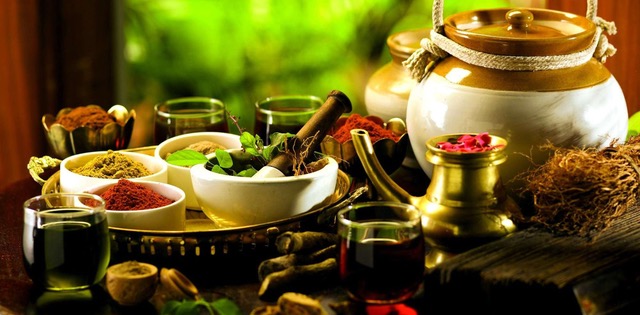
Ayurveda is a 5000-year science originating from India, with ‘Ayur’ meaning life and ‘Veda’ meaning knowledge. It classifies human beings into five body types based on predominant elements and incorporates these elements from nature into the principle of tridosha (bio-energies) – Vata, Pitta and Kapha.
Vata is Air and Space: it’s movements & transformation in nature and the human body.
Pitta is Fire; along with water, it represents digestion and metabolism.
Kapha is water and earth element; it means more lubrication and stability in nature and within our bodies.
Imbalances in these bio-energies cause diseases and prevent us from leading a vibrant and disease-free life.
Female Reproductive Health
Ayurveda has many recommendations for the female reproductive system (called Artava vaha sortas), which includes the ovaries, fallopian tubes, fungus of the uterus, uterine wall, cervix, cervical canal, and vaginal cavity. All these seven tissues need to be nourished with proper nutrition. The nourishment from digested food feeds the seven tissues through the plasma, blood, muscle, fat, bone, and bone marrow. The plasma (Rasa Dhatu) is vital as it carries hormones and nutrients and is responsible for nourishing the lactating tissue and the tissues aiding menstruation.
The Menstrual Cycle
Menstruation starts at menarche until menopause. Girls with hyperactive Pitta can begin at the ages of nine to 14 years, and Kapha types usually don’t start till 14 to 15 years. Menopause is the age of Vata from 35 years in Pitta women and 58 to 60 in Kapha type women.

General Ayurvedic Management for a healthy menstrual cycle:
- Exercise daily or practice yoga and pranayama.
- Family and friends can provide emotional support during the time of a woman’s cycle.
- Avoid salt before the menstrual period.
- Reduce caffeine intake; quit smoking; reduce intake of refined sugars.
- Reduce hot and spicy sour foods.
- Take the milk off Shatavari (Indian asparagus), 1/2 tsp Shatavari powder milk in 1 cup warm milk to reduce pain and cramps.
- Drink 1/2 tsp of each- fennel, coriander, and cumin seeds boiled in 1 cup water for 15 minutes, strained, and at room temperature. It is advised to have this two times a day for bloating and burning in the stomach due to menstruation.
- Eat small frequent meals, including green dhal soup, red lentil soup, grapes, and raisins, to regain iron and magnesium in the body.
- Vitamin B6, Calcium, and magnesium supplements are taken during this time.
Common Health Issues Related to Menstruation from childhood to menopause:
1. Dysmenorrhea – Painful menstruation.
Manage dysmenorrhea with daily Abhayanga (oil massage) using nirgundi (Chaste Tree) oil or Mahanarayana (Ayurvedic medicated oil) oils made with sesame seeds. Apply to the lower abdomen and lower back.
2. Premenstrual syndrome or PMS – Complex set of physical and emotional symptoms that begin a week before periods.
A teaspoon of water mixed with herbs like Tagara and Jatamnasi (Spikenard) ½ teaspoon helps relieve PMS headaches.
3. The best foods for dysmenorrhea and PMS are broths, urad dhal soup, winter squash, zucchini and pumpkin for Vata body types. Grapes, Shatavari milk and coconut milk are good for Pitta. Kapha should favour light and digested foods.
Share
Picture Credit : Cliff Booth from Pexels

Thanks for the information. Didn’t know Ayurveda could help with PMS management also.